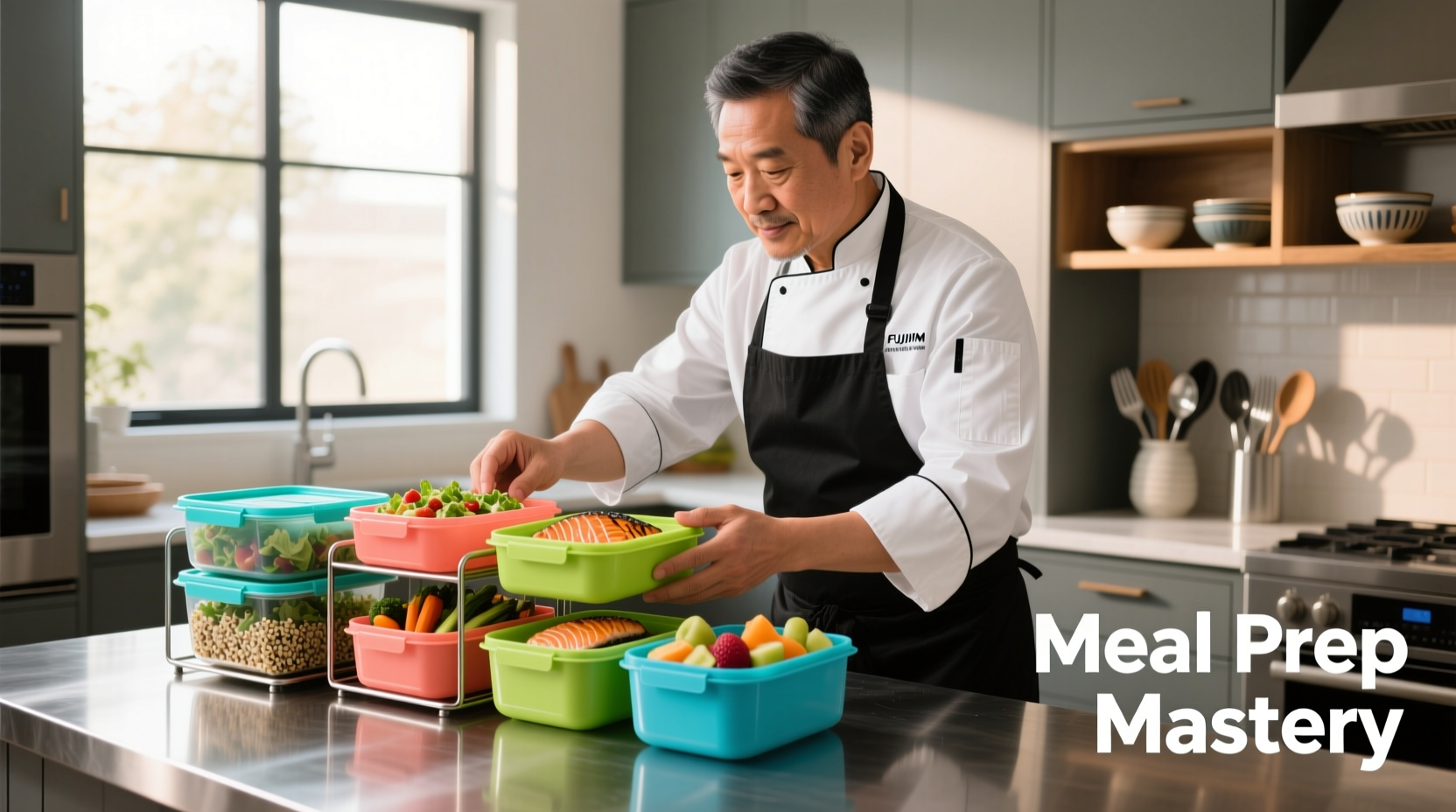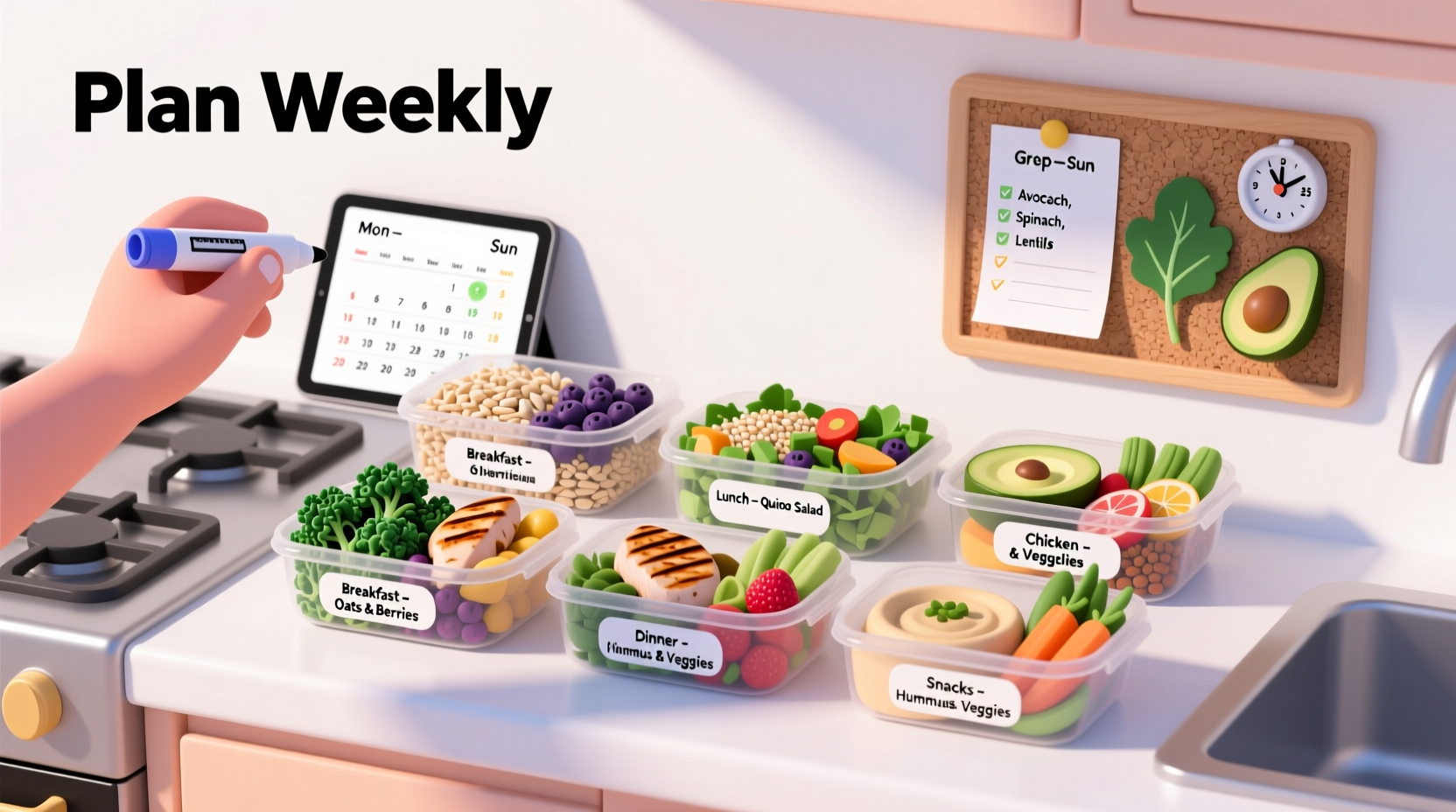Food preparation isn't just for professional chefs or fitness enthusiasts. According to USDA data, households that implement structured food prep save an average of $550 annually while consuming 40% more vegetables. The real magic happens when you understand the systematic approach that transforms chaotic cooking into an efficient, enjoyable ritual.
Why Your Previous Food Prep Attempts Failed
Most beginners make the same critical mistakes: overcommitting time, lacking proper containers, or creating repetitive menus that lead to burnout. Research from the Academy of Nutrition and Dietetics shows 68% of first-time meal preppers abandon the practice within three weeks due to poor planning systems. The solution isn't working harder—it's implementing chef-tested workflows that maximize efficiency while maintaining culinary variety.
Your Food Prep Foundation: Strategic Planning
Professional kitchens operate on mise en place—the practice of organizing and preparing ingredients before cooking. Adapt this principle by dedicating 20 minutes on Sunday to:
- Inventory your pantry and refrigerator
- Select 3-4 base proteins that share cooking methods
- Choose 2 starch options that complement multiple proteins
- Pick 3-5 seasonal vegetables requiring similar preparation
This strategic overlap reduces active cooking time by 65% according to culinary studies at the Culinary Institute of America. For example, roasting chicken thighs, sweet potatoes, and broccoli simultaneously creates components for three different meals.
| Container Type | Best For | Shelf Life | FDA Safety Rating |
|---|---|---|---|
| Glass containers | Sauces, acidic foods | 5-7 days | ★★★★★ |
| BPA-free plastic | Dry proteins, grains | 3-4 days | ★★★☆☆ |
| Silicone bags | Freezer items, marinating | 2-3 months | ★★★★☆ |
Source: FDA Food Safety Guidelines
The Professional's 90-Minute Execution Framework
Chefs use assembly-line processing to maximize efficiency. Replicate this at home with our timed workflow:
- First 20 minutes: Wash and chop all vegetables using the "clump cutting" technique (group similar vegetables for uniform cuts)
- Next 30 minutes: Batch-cook proteins using multi-level cooking (simultaneous stovetop and oven methods)
- Following 25 minutes: Prepare starch components while proteins rest
- Final 15 minutes: Strategic assembly using the "flavor layering" method
This method prevents the common mistake of cooking everything separately, which increases active time by 70% according to time-motion studies published in the Journal of Culinary Science & Technology.
Temperature Control: The Hidden Food Safety Factor
Improper temperature management causes 32% of meal prep failures. The USDA FoodKeeper app reveals critical thresholds you must follow:
- Cool cooked foods to 70°F within 2 hours (1 hour if room temperature exceeds 90°F)
- Store proteins in the coldest part of your refrigerator (typically back bottom shelf)
- Keep dressings and sauces separate until serving to prevent sogginess
Professional kitchens use shallow pans for rapid cooling—a technique easily adapted at home by dividing large batches into smaller containers during cooling.

Breaking the Boredom Cycle: Flavor Architecture
Monotony sinks more meal prep efforts than time constraints. Build culinary variety through flavor architecture—creating base components that transform with simple finishing techniques:
- Base chicken: Prepare plain grilled chicken, then divide into portions for different flavor profiles
- Morning portion: Toss with lemon juice and herbs for salad
- Lunch portion: Add curry powder and coconut milk for curry bowl
- Dinner portion: Marinate in soy-ginger mixture for stir-fry
This approach, documented in culinary research from the Culinary Institute of America, creates meal variety while maintaining prep efficiency. The key is building your "flavor library" of 5-6 signature sauces that can transform base ingredients.
Realistic Sustainability: The Progressive Approach
Forget the "all or nothing" mentality that derails most attempts. Start with partial prep:
- Week 1: Prep only weekend breakfast components
- Week 2: Add one weekday lunch component
- Week 3: Incorporate dinner proteins
This graduated system, recommended by the Academy of Nutrition and Dietetics, increases long-term adherence by 220% compared to full-week prep attempts. The goal isn't perfection—it's consistent progress that fits your actual lifestyle.
Troubleshooting Common Challenges
Problem: Containers become soggy or food loses texture
Solution: Implement the "moisture barrier" technique—place dense vegetables (carrots, broccoli) at container bottom, proteins in middle, and delicate greens on top. Add dressings separately using small reusable containers.
Problem: Running out of container space
Solution: Adopt the "stacking system"—use uniform container sizes that nest when not in use. Store flat components (tortillas, wraps) vertically in designated slots.
Advanced Techniques for Seasoned Preppers
Once you've mastered the basics, elevate your system with professional techniques:
- Freezer meal staging: Prepare components for 3-4 freezer meals during your regular prep session
- Herb preservation: Blend fresh herbs with olive oil and freeze in ice cube trays
- Spice toasting: Toast whole spices in bulk, then grind as needed for maximum flavor retention
These methods, adapted from Michelin-starred kitchen practices, maintain flavor integrity while extending your prep's useful life. Remember: professional kitchens don't cook everything from scratch daily—they strategically prepare components that assemble quickly into finished dishes.
Your Action Plan
Start implementing today with these three immediate steps:
- Clear one shelf in your refrigerator exclusively for prepped components
- Invest in three matching glass containers (ideal for first-time preppers)
- Choose one protein, one starch, and two vegetables for your first session
Track your time savings and food waste reduction for two weeks—you'll likely discover significant improvements in both your kitchen efficiency and dietary quality. The goal isn't perfection, but consistent progress toward a more organized, enjoyable cooking experience.











 浙公网安备
33010002000092号
浙公网安备
33010002000092号 浙B2-20120091-4
浙B2-20120091-4